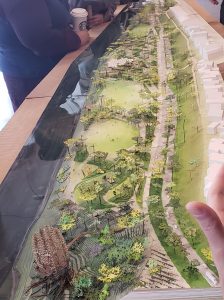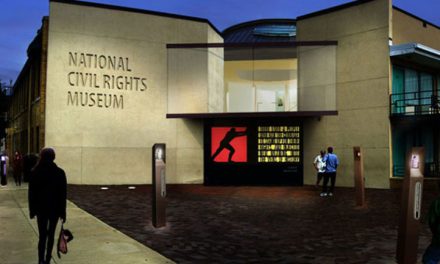In the parlance of my Arkansas relatives, it’s time for Memphis in May to fish or cut bait.
After 18 months of meetings to make sure the design of Tom Lee Park suits the festival’s needs, the seminal question today is whether it is willing to kill off the spectacular reimagination of this mundane, mediocre place that is a park in name only.
A few weeks ago, we were told that there were no major hurdles left in resolving Memphis in May’s few last issues. And yet, today, it’s taking on the feeling that if ten things are handled for our favorite regional festival, they may always have a couple more.
We were encouraged by Memphis in May’s statement just a few weeks ago that it was “confident” that a solution could be reached. And yet, we’re told by a frustrated festival official that there is little reason that an agreement hasn’t already been reached: first, because some issues resulted from its architect misreading the park’s plans, and second, because there’s nothing to prevent Memphis in May from being successful in the park.
Logic 101
We pointed out in a previous post that based on the customary square footage used by music festivals, the three large areas set aside for Memphis in May at Tom Lee Park will handle the largest attendance of the Beale Street Music Festival.
When it became apparent that there is general consensus about this fact, the loud grievances by barbecue team participants came to dominate the latest wave of often hysterical complaints. Memphis in May officials say they are doing nothing to fan these flames, but it’s hard to see that they are doing anything to extinguish them either.
These complaints are especially ironic, considering the fact that when the World Championship Barbecue Cooking Contest moved to Tiger Lane at the Fairgrounds because of the flooding from the Mississippi River in 2011, the feedback from the barbecue teams was overwhelmingly positive.
Here’s the thing: we would not support a design for a spectacular Tom Lee Park if it would diminish Memphis in May’s two signature events. However, it is simply logical that eight days of those events should not drive the other 357 days of the year. It is equally logical that the about 6% of Shelby Countians who pay to attend Memphis in May events each year should not block the 100% of local residents who could experience a grand park free for the rest of the year.
Making Two Plus Two Equal Six
Already the Memphis River Park Partnership has been contacted by promoters who are interested in scheduling large-scale concerts in the park. After all, some of the best music festivals and barbecue contests in the country are in “real” parks, and I am optimistic enough, as the longest serving executive committee member in Memphis in May’s history, to believe that its unique expertise and professional experience mean that it can leverage Tom Lee Park’s improved environment to catapult it onto the national lists of best music festivals and barbecue contests.
But the design of Tom Lee Park is more than about the best use of the most prized 30 acres in Memphis. It’s also about what produces the biggest economic boost for downtown and its adjacent north and south Memphis neighborhoods.
Based on our confidence in Memphis in May’s abilities and the compromises made to Tom Lee Park’s designs to accommodate the festival, there is no reason to think that its economic impact will be lessened or that it will produce less in sales taxes for City of Memphis and State of Tennessee.
However, a new riverfront generates both sales taxes and property taxes and leads to increased valuation of downtown properties. Since 2011, property tax revenues and assessed values downtown have declined 4% and the downtown vacancy rate has grown by 365,000 square feet. The riverfront plan reverses that trend line, and dynamic riverfront investments across the U.S. are proof positive of that fact.
Getting The Priority Right
In this way, the choice is not between a successful Memphis in May and a vibrant Tom Lee Park because it’s clear there is no conflict. Rather, the choice is between an underperforming 30 acres and a spectacular park that sparks new residential, office, and retail development.
Best of all, the park stimulates development that results in more property taxes to support the vital services of local government and schools, whereas three-fourths of sales taxes go to state government. To repeat, the festival produces sales taxes and that’s significant, but a rebooted riverfront produces both sales taxes and property taxes.
We are certain that Memphis in May is not interested in killing off a project that has such multi-faceted impact, but it’s time for it to say that once and for all and that it is a full partner and an honest broker in these discussions so Memphis can move ahead with the rebirth of Tom Lee Park.
In only two months, the City of Memphis will celebrate the 200th anniversary of its official founding, and because of it, there is broad discussion about what Memphis will be in its third century. The future of Tom Lee Park will telegraph the answer. Today, it is not as much about momentum as moroseness. It’s not as much about tenacity as timidity. It’s not as much about ambition as apathy.
I often think of my friend, restaurateur, and civic icon the late Thomas Boggs in situations like these. As chairman of the board of directors for Memphis in May, in the midst of evaluating an important decision for the festival, he once said: “We may be called Memphis in May but remember, our top priority is to Memphis and that means putting the city first in all that we do.”
Words to live by.
***
Join us at the Smart City Memphis Facebook page for daily articles, reports, and commentaries that are relevant to Memphis.





If the BBQ teams don’t like it, send them to Tiger Lane.
Let’s be perfectly clear here: Moving the BBQ Fest out to Tiger Lane on a permanent basis will simply kill it. Period.
There’s nothing wrong with Tiger Lane, and it was fine when the park was flooded. But the whole point of the festival is to spend some time in the park and on the river, enjoying the place. If it’s not on the river on a permanent basis, then it will die off, because nobody wants to have a festival in a friggin’ parking lot.
I’m with MiM on this. We don’t need an overpriced and useless renovation to the park. It’s fine. Leave it alone, and spend the money on stuff that’s needed elsewhere. We keep throwing money at the “riverfront” when all the actual business are up the hill and have other needs. The riverfront is not a draw. Stop trying to re-develop it.
Memphis in May is a tired old event that has no imagination. It greatly overestimated its own importance. Everyone should go if they want to be with a bunch of drunk kids at the concerts or watch a bunch of white guys at barbecue contest. Why do some people work so hard to defend something that doesn’t represent Memphis at its best and all of us?
Parks before pork.
We own the land, not this second rate festival. Check out lineup in New Orleans.
Since when did Memphis in May get to decide whether we get a park or not?
Build this park!
Not Relevant: If you’re interested in stimulating and helping businesses in downtown and adjacent neighborhoods, you should look to a spectacular park as one of the things that makes that happen. It’s happened in cities all over the U.S., but we often want to act like we’re different here and that what we have is good enough for Memphis. Certain investments generate other investments. This is one of them. As for the adjective useless, that certain describes the pasture today. And finally, tourism officials have said for years that the most frequently photographed place in Memphis is the river. So we need to give people a reason to linger and enjoy it more.
I can’t understand all the moaning and groaning from some people. We’re getting a park and it’s being paid for by other people. Yeah, let’s turn that down for sure. Sounds like something Memphis would do. What’s even crazier is that some of the people who are attacking the park are the same ones who most of them time are bitching that Memphis can’t ever do anything as good as other cities like Nashville. Give me a break.
Memphis In May is a nearly 100% white event in a city thats 68% black it features small clicks of rednecks getting drunk and roasting pigs. It’s dated, tragic and at its heart is a celebration of rural white taste. It’s a “non-profit” that pays its leaders 6 figures. It’s just a circus that blows into town, small town folks think they are coming to the big city and then leave. The head of the Memphis Hotel Association lives in Ark not Memphis.
I want a park for the majority of Memphis that actually lives here. Black moms and their kids for example.
I’m tired of the same set of good ole boys making the rules.
Rufus is so right. Memphis in May has never done anything to make blacks feel welcome. So much of what’s said by Memphis in May big backers are about keeping “them” off the riverfront. We know who “them” are. We already hear it from the rich people living above the park, and it doesn’t take a brain surgeon to know that Memphis in May wants to keep its white Memphis event and decide what we should get in the way of a park..
Take Rufus’ black percentage of Memphis and then look at the Memphis in May website. If Memphis is 68% black, the people working at Memphis in May are 13% black, the board is 30% black, and the volunteer committee chairmen are 6% black.
That all I need to know to know what kind of group it is.
I haven’t been to Memphis in May for years, but I know it’s important to Memphis. But choosing between a few days of music and grub and a park I can use every day of the year, it’s a no brainer.
I love, love, love Memphis in May, but not enough for it to keep me from getting a great park on the river.
MRPP just spent 10 Million on the Civic Commons and what do we have to show for it… River Garden, a project which should have only cost 2 Million. MRPP has been ignoring MIM and others for 2 years, that is why the project is in limbo.
So, meeting with Memphis in May more than 30 times over two years and changing park plans more than 12 times is ignoring it? I don’t see my family that much. As for Civic Commons, it’s not just River Garden. That project, which is managed by the City of Memphis, also includes Cossitt Library and adjacent areas.